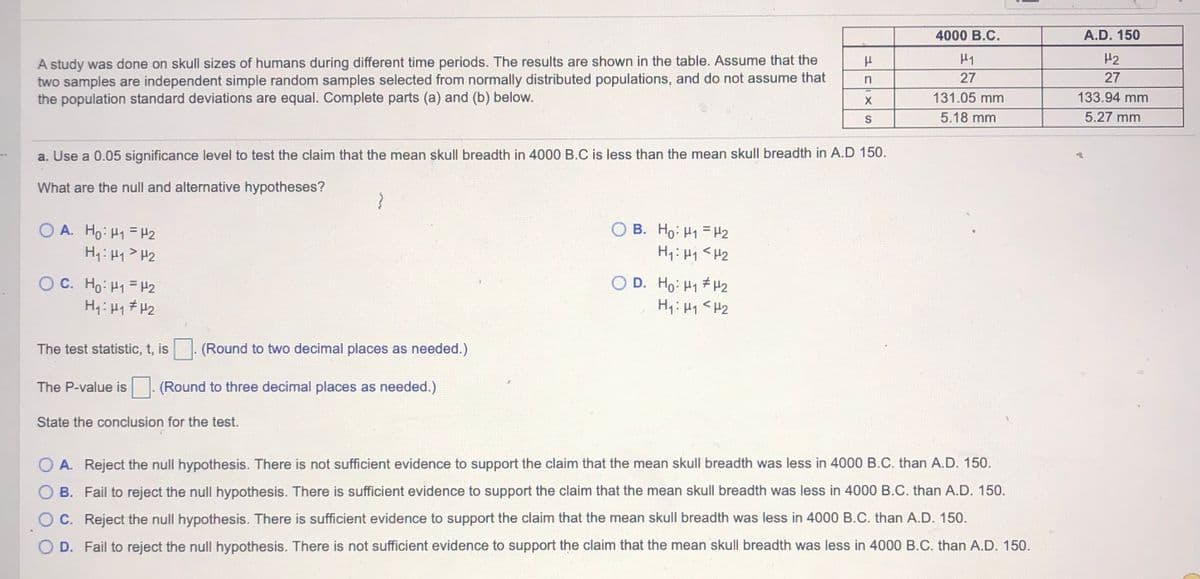4000 B.C. A.D. 150 A study was done on skull sizes of humans during different time periods. The results are shown in the table. Assume that the two samples are independent simple random samples selected from normally distributed populations, and do not assume that the population standard deviations are equal. Complete parts (a) and (b) below. H1 27 H2 27 131.05 mm 133.94 mm 5.18 mm 5.27 mm a. Use a 0.05 significance level to test the claim that the mean skull breadth in 4000 B.C is less than the mean skull breadth in A.D 150. What are the null and alternative hypotheses? O B. Ho: H1 = H2 H4: H1 H2 OC. Ho: H1 = H2 H: H1 # H2 O D. Ho: H1 #H2 H,: H1
Continuous Probability Distributions
Probability distributions are of two types, which are continuous probability distributions and discrete probability distributions. A continuous probability distribution contains an infinite number of values. For example, if time is infinite: you could count from 0 to a trillion seconds, billion seconds, so on indefinitely. A discrete probability distribution consists of only a countable set of possible values.
Normal Distribution
Suppose we had to design a bathroom weighing scale, how would we decide what should be the range of the weighing machine? Would we take the highest recorded human weight in history and use that as the upper limit for our weighing scale? This may not be a great idea as the sensitivity of the scale would get reduced if the range is too large. At the same time, if we keep the upper limit too low, it may not be usable for a large percentage of the population!

Trending now
This is a popular solution!
Step by step
Solved in 2 steps with 2 images


